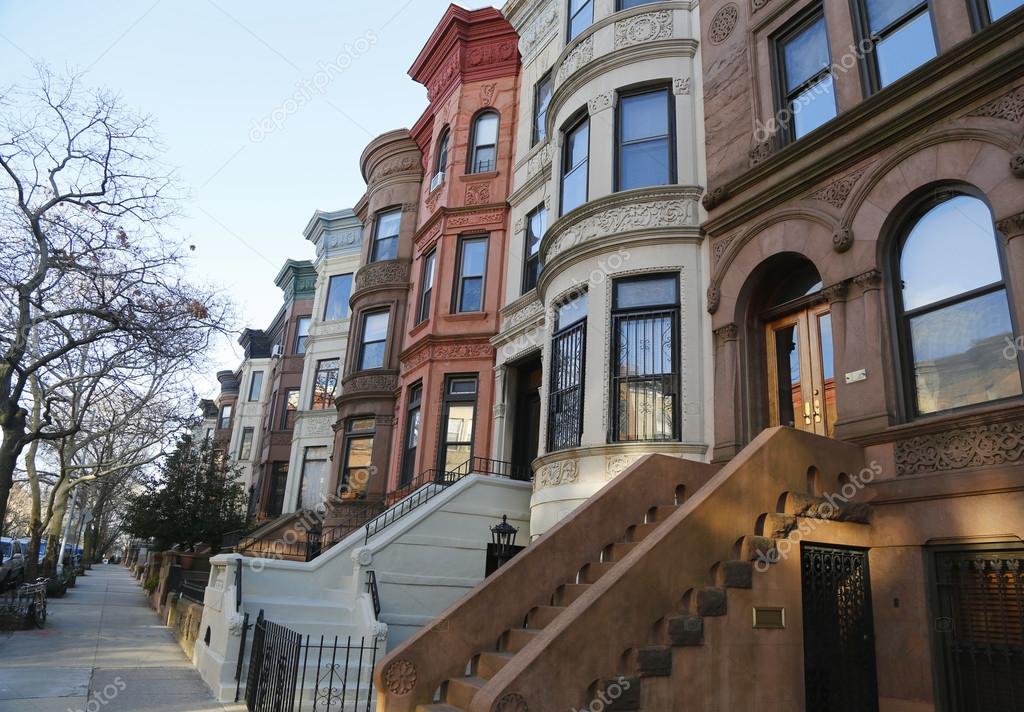Prospect Heights brownstones, the neighborhood
Zweig and his family moved from.
Constantly criticized for being quick to alienate and dull the individual, New York City is perhaps the most unique of American cities. Historically, the city has always been presented as a gateway to the American experience. But, with a population of over 8 million, it is simply no longer feasible to assume that every New Yorker's sidewalks will be paved with gold. I am not saying that NYC has ever been a bastion of prosperity for everyone, but I am saying that the resources that are available in the city are now being shared with the most people they ever have been. This competitive attitude is difficult to sustain for many, leading to the classic perception of city residents to be forever caught in the so-called "Rat-Race".
Having never had the opportunity to live in the city in question, I understand that my outsider perspective contributes heavily to my interest in this quintessential urban lifestyle. This is why I found Zweig's article so interesting. For me, the movement from the urban center represents the continuing human struggle to find the resources that are best for their well being. This article also suggests that there is a pattern to the American lifestyle, a stint in an urban apartment with a growing family being only part of the larger picture. For this American lifestyle to perpetuate, there must be sizable tracts of non-urban landscapes for individuals to inhabit.
Map showing the land Classifications within the Adirondack Park
The approximate 3 million acres of privately owned land within the Blue Line is partially being used for this purpose. To ignore the need for rural or suburban areas for inhabitation to continue to fuel this American Dream of idyllic suburban childhood, electric urban adulthood, and scenic rural retirement is in direct conflict with the perpetuation of the idealized "American Dream". For me, Zweig's article indicates both that the constructs of old-school Americana are not so easily erased and that if society is to maintain this image of an America of freedom, there must be a variety of housing options available to a wide range of American residents.
Kiwassa Lake Home on the market for $3,500,000: A bastion of the "American Dream"?
This concept of humans having a right to inhabit any type o environment that they choose may not be the most ethically sound behavior, but it is an inherently American attitude. So, in the name of consistency, the current public-private balance within the Adirondack Park makes sense. Ecologically, this is concerning for many who are invested in the concepts of conservation and preservation. However, as the behavior I have been describing has been around for generations, I am hesitant to predict that the path that countless individuals such as Zweig have placed themselves on will be changing anytime soon. Here in lies one of the most challenging aspects of realistically enacting the necessary cultural shifts that will need to take place in the name of a greener future.
Works Cited
http://www.nytimes.com/2015/11/01/realestate/escape-from-brooklyn.html?smid=fb-nytimes&smtyp=cur&_r=1
http://www.census.gov/popest/about/terms.html
http://st2.depositphotos.com/1587911/6029/i/950/depositphotos_60296321-Famous-New-York-City-brownstones-in-Prospect-Heights-neighborhood-in-Brooklyn.jpg
http://www.protectadks.org/wp-content/uploads/2013/02/PROTECT-Map-2013ConservationEasements.gif
http://www.adkpp.com/sites/default/files/styles/listing_image/public/listings/kiwassa-lake-home/kiwassa-lake-home_4.jpg?itok=RX6fZstP



This is an interesting post! I agree that this is a very inherently American attitude. You can see its roots in all the 'manifest destiny' doctrine of the 19th century. This ingrained culture definitely makes it difficult to pave a way to a more eco-friendly future.
ReplyDeleteThis touches on what we talked about in class today... I agree that these choices reflect upon the certain American mindset that possibilities are endless and resources are exploitable, correlating along with the "American dream", however, as development increases throughout the country, we'll begin to run out of places to escape to. As a result of these choices, will we have to sacrifice the suburban lifestyle we seek out in our later, adult years?
ReplyDelete